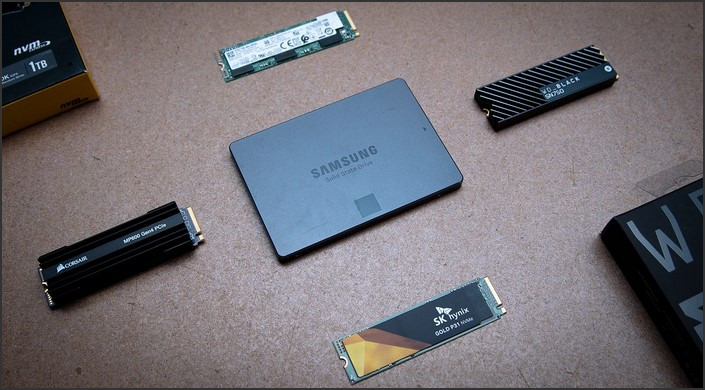NVMe Versus SSD: Unraveling the Storage Drive Dilemma

Source : https://miro.medium.com
NVMe and SSD are two prominent technologies in the realm of data storage, each with its unique features and benefits. The comparison between NVMe (Non-Volatile Memory Express) and SSD (Solid State Drive) often leads to a storage drive dilemma for many users. While SSDs have been a revolutionary replacement for traditional hard drives, offering faster speed and reliability, NVMe takes it a step further by providing even faster data transfer rates. This introduction aims to unravel the complexities and differences between these two technologies, helping users make an informed decision about their data storage needs.
NVMe Versus SSD: Unraveling the Storage Drive Dilemma
In the realm of data storage, the terms NVMe and SSD are often used interchangeably, leading to a great deal of confusion. However, these two technologies, while related, are not the same. Understanding the differences between them is crucial for anyone seeking to optimize their computer’s performance.
Solid State Drives, or SSDs, have been a game-changer in the world of data storage. Unlike traditional Hard Disk Drives (HDDs), which store data on spinning disks, SSDs use flash memory to store data. This fundamental difference in technology results in SSDs being significantly faster and more reliable than HDDs. SSDs have no moving parts, which reduces the risk of mechanical failure, and their speed allows for quicker boot times, faster file transfers, and overall improved system performance.
However, while SSDs are a significant improvement over HDDs, they are not the pinnacle of storage technology. Enter NVMe, or Non-Volatile Memory Express. NVMe is not a type of drive, like an SSD or HDD, but rather a protocol, or a set of rules and procedures for how data is transferred between your computer’s system and its storage drives.
NVMe was specifically designed for SSDs, and it takes full advantage of the capabilities of these drives. Traditional SSDs use the SATA interface, which was originally designed for HDDs. While SATA is capable of handling the speeds of SSDs, it doesn’t fully utilize their potential. NVMe, on the other hand, was designed with the speed of SSDs in mind. It connects directly to your computer’s PCIe (Peripheral Component Interconnect Express) bus, which allows for faster data transfer than SATA.
The result of this is that NVMe drives are significantly faster than traditional SSDs. In fact, NVMe drives can be up to six times faster than SATA SSDs. This can result in even quicker boot times and file transfers, as well as improved performance in data-intensive tasks such as video editing or gaming.
However, while NVMe drives are faster, they are also more expensive. For many users, the speed of a traditional SSD is more than sufficient, and the additional cost of an NVMe drive may not be justified. Additionally, not all computers are capable of utilizing NVMe drives. To use an NVMe drive, your computer must have a compatible PCIe slot, and your operating system must support the NVMe protocol.
In conclusion, while NVMe and SSD are often confused, they are not the same thing. SSD refers to a type of drive that uses flash memory to store data, while NVMe is a protocol designed to take full advantage of the speed of SSDs. NVMe drives are faster than traditional SSDs, but they are also more expensive and require specific hardware and software support. Therefore, when choosing between NVMe and SSD, it’s important to consider not just the speed, but also the cost and your specific needs and capabilities.In conclusion, NVMe and SSD are not competing technologies but rather complementary. SSD refers to a storage device using flash memory while NVMe is a protocol for accessing high-speed storage media. NVMe SSDs offer faster performance and lower latency compared to traditional SSDs, making them ideal for heavy workloads and high-performance computing. However, traditional SSDs are still a viable and cost-effective option for less demanding storage needs. The choice between NVMe and SSD ultimately depends on the specific storage requirements and budget constraints.
